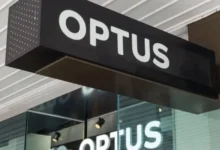Australia Demands ‘Enforceable Codes’ To Protect Children Online

Key internet players have six months to develop "enforceable codes" that will help shield children from exposure to harmful online content
Mihir Bagwe July 3, 2024

Share on LinkedInShare on Twitter
Australia’s eSafety Commissioner has given key online industry players six months to develop “enforceable codes” to shield children from exposure to pornography and other harmful content.
The codes will aim to prevent young children from encountering explicit material that is deemed unsuitable for their age. They will also seek to empower Australian internet users with options to manage their exposure to various online materials.
While the primary focus is on pornography, the codes will also cover other high-impact content, including themes of suicide, self-harm, and disordered eating.
The regulations will apply to app stores, apps, websites (including porn sites), search engines, social media, hosting services, ISPs, messaging platforms, multiplayer games, online dating services, and device providers. The European Union calls these large digital platforms “gatekeepers.”
Why ‘Enforceable Codes’ are Important
eSafety Commissioner Julie Inman Grant noted the pervasive and invasive nature of online pornography. She said children often encounter explicit material accidentally and at younger ages than before.
“Our own research shows that while the average age when Australian children first encounter pornography is around 13, a third of these children are actually seeing this content younger and often by accident,” – eSafety Commissioner Julie Inman Grant
She clarified that these measures focus on preventing young children’s unintentional exposure to explicit content that revolves around such a sensitive topic.
Social media plays a significant role in unintentional exposure, with 60% of young people encountering pornography on platforms like TikTok, Instagram, and Snapchat, according to Inman Grant.
“The last thing anyone wants is children seeing violent or extreme pornography without guidance, context or the appropriate maturity levels because they may think that a video showing a man aggressively choking a woman during sex on a porn site is what consent, sex and healthy relationships should look like,” she added.
Parents and caregivers are crucial in protecting children, but the industry must also implement effective barriers, Inman Grant stressed. These could include age verification, default safety settings, parental controls, and tools to filter or blur unwanted sexual content.
Such measures should apply across all technology layers, from connected devices to app stores, messaging services, social media platforms, and search engines, providing multi-layered protection, the eSafety Commissioner said.
Draft Due Oct. 3, Final Versions by Dec. 19
Industry bodies are required to submit a preliminary draft of the codes by October 3, with final versions due at the end of the year on December 19. Public consultations in the process of defining “enforceable codes” is also a requirement from the eSafety commissioner.
eSafety has released a Position Paper to help industry develop these codes and clarify expectations.
“We want industry to succeed here and we will work with them to help them come up with codes that provide meaningful protections for children.” – eSafety Commissioner Julie Inman Grant
eSafety Commissioner Can Set Rules if Efforts Fail
But if any code falls short, then the eSafety commissioner can set the rules for them, under the Online Safety Act provisions. eSafety has also published an Age Assurance Tech Trends Paper examining recent developments in age verification technology to provide additional context.
These new codes will complement existing protections under the Online Safety Act, including the Restricted Access System Declaration, Basic Online Safety Expectations Determination, and initial industry codes addressing illegal content like online child sexual abuse material.
Additionally, the codes align with broader initiatives such as the Government’s Age Assurance Trial, Privacy Act reforms, the statutory review of the Online Safety Act, and efforts under the National Plan to End Violence Against Women and Children 2022-2032.
Last year, the eSafety commissioner had also issued notices to online platforms like Twitter, Meta, and others concerning their approaches to combatting online child abuse. This was followed by a similar action from Inman Grant against online hate over social media platforms.





